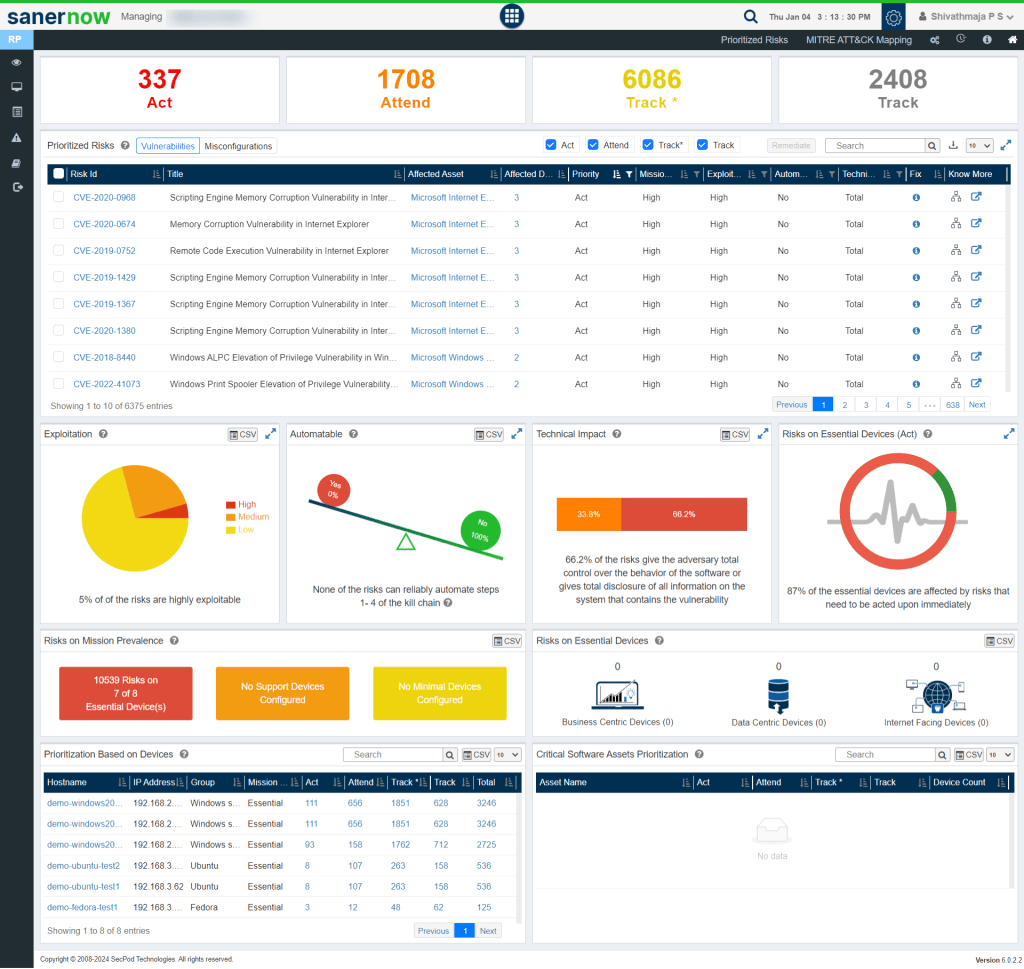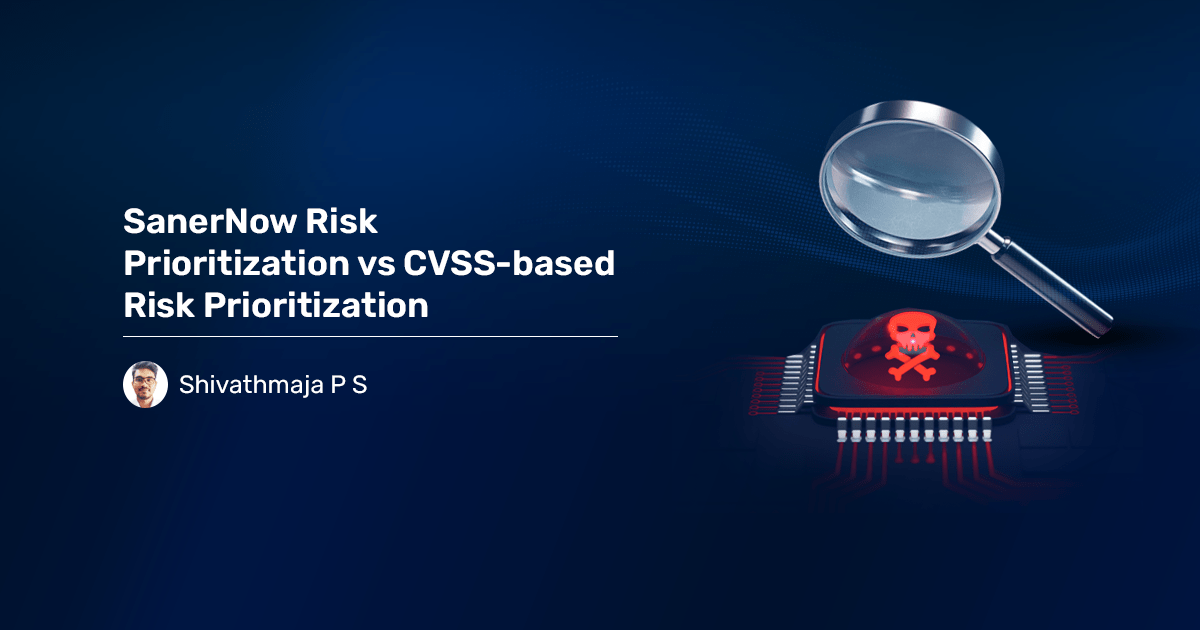A mountain of vulnerabilities and no way of knowing the most critical ones. This is the story of every modern organization’s network, including yours probably. “But what about CVSS-based prioritization?” you might ask. While CVSS in cyber security is a popular method, vulnerability management tools using it have been ineffective in managing a million vulnerabilities in your network.
So, what is the alternative? Is it better? More effective? More secure? Let’s find out.
What’s Risk Prioritization, and why it’s Critical for Cyberattack Prevention?
Modern networks, with complex devices and applications within them, have millions of security risks that threat actors can potentially exploit. The simple truth is there are just too many security risks, and it is, while ideal, not practical to mitigate all of them. That’s where Risk Prioritization comes into play.
Risk Prioritization, as the name suggests, is the process of prioritizing risks based on the potential risks associated with them. By categorizing them based on the level of potential risk they pose, risk prioritization helps exponentially reduce the attack surface that the risk makes up.
Risk Prioritization plays a critical role in vulnerability management and cyberattack prevention in general. The process of detecting security risks and mitigating them is already lengthy, and with more and more vulnerabilities, risk prioritization helps make the job of remediating risks a little easier.
And CVSS is the most common way of risk prioritization.
Why is CVSS in Cyber Security Popular? Even if it’s not good enough
CVSS, or Cumulative Vulnerability Scoring System, is the most popular way of prioritizing risk, albeit its intention was just to measure the criticality of a particular vulnerability. The idea of CVSS scoring was to give organizations an idea of the potential risk a particular vulnerability might pose to organizations.
Because a vulnerability has a single score from 0-10, and that single score determines the criticality, it becomes convenient for IT Security teams and organizations to sort the vulnerabilities based on the score and start remediation.
But CVSS has glaring limitations that hinder its effectiveness when used for prioritizing risks:
- CVSS is not organization-specific: Not every risk can have the same impact on every organization. A particular risk in an application can have zero effect on an organization if that application is not present in its infrastructure! CVSS doesn’t incorporate this property of security risks, making it misleading and providing a wrong threat landscape picture to Security teams.
- CVSS is not Dynamic: A CVSS score, once assigned, is static. However, vulnerabilities might be exploited by new exploit kits, raising the potential risk it might cause to your organization. This dynamic nature of a security risk is not incorporated in the CVSS scoring. And it works the other way around, too, with more attention being given to the high-risk security risks while the medium-risk security risks are being exploited at large.
So, what is the alternative?
SanerNow Risk Prioritization: The Better Alternative for CVSS in Cyber Security
SanerNow is a risk-based continuous vulnerability and exposure management solution for modern IT and Security teams. It can detect, assess, prioritize, and remediate security risks like CVEs, misconfigurations, asset exposures, posture anomalies, and more. Its an excellent alternative to CVSS in cyber security
With its Risk Prioritization model, SanerNow can help you simplify the prioritization of risks in your organization. Additionally, by incorporating proprietary technology based on CISA’s SSVC framework, SanerNow Risk Prioritization combines business risk, criticality, exploitability, and vulnerability intelligence to go beyond just CVSS-based prioritization.
Further, it also harnesses Exploit Prediction Scoring System (EPSS), a data-driven method of estimating the potential dangers of security risk. So, SanerNow adds another layer of bleeding-edge technology to improve the effectiveness of risk prioritization.
| SanerNow Risk Prioritization | CVSS-based Risk Prioritization |
| Advanced Risk prioritization based on a combination of EPSS and CISA SSVC framework. | Basic risk prioritization based only on the static CVSS scoring system. |
| Combines business risk, criticality, exploitability, automation, and vulnerability intelligence alongside CVSS’s base metrics. | Only considers static CVSS base metrics of exploitability, impact, and scope and provides a fixed criticality measure. |
| Automatically integrated with SanerNow vulnerability detection and mitigation to simplify and speed up prioritization and remediation. | Needs manual integration with a remediation/patching tool, making the remediation process slow and ineffective. |

Conclusions
CVSS in cyber security, while popular, is dated. Further, it can provide a false sense of security and protection over your organization while dangerous risks might go under the radar. It’s time to revamp your existing risk prioritization strategies and improve your organization’s security by incorporating advanced risk prioritization methods.
SanerNow Advanced Vulnerability Management can be the perfect starting point for organizations looking to rapidly improve their IT security and strengthen their network’s security posture. Check it out now!


